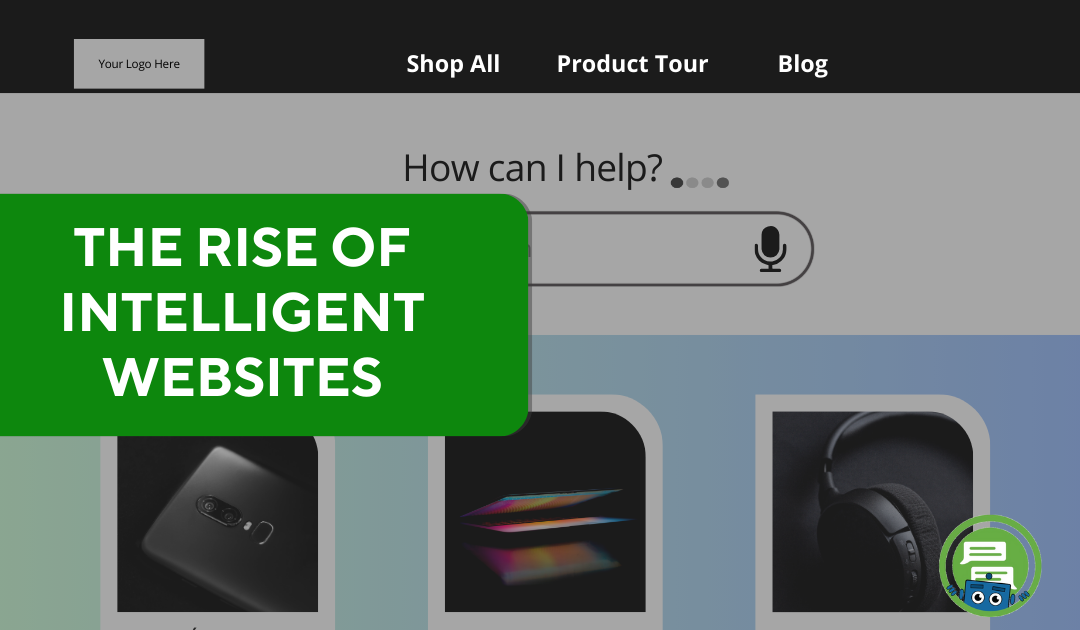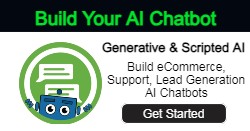I built my first website in 1994; since then, we’ve had many technological changes, from the simple HTML site to the current responsive web design. An argument can be made that simple HTML sites are faster and more efficient than many modern WordPress sites. Back then, mobile websites were a “thought problem” for what the future could hold.
Unfortunately, the usability of a site has not really changed. Think about it: 30 years and no significant changes in how a website visitor finds what they are looking for on a website. A visitor must still click through submenus to find a sub-sub-category and then review a page to see if it’s what they are looking for.
The whole navigation and site exploration process gets even worse when you factor in mobile devices. Site menus that are already overly complicated become squished hamburger menus, which look nice but do not convert well into sales.
Visitors have a high probability of not finding what they seek and bounce off to another site. This is time-consuming, inaccurate, and passive.
Until now.
The typical website visitor journey is as follows:
-
-
- Am I on the right site?
- Do they have the exact product or service I need?
- Is the product of value and can I trust them?
- is the price and delivery within my expectations?
-
If the visitor can’t answer these questions they quickly move on to another site. This can be financially painful for sites paying for advertising and paid SEO experts to position the site.
In the last couple of decades, standard search features at the top of a website have yielded mediocre results.
When Ometrics launched its AI chatbot, Ochatbot, in 2017, its purpose was to reduce navigation use and overcome sales obstacles by providing product and service information and options to fill a lead from or add a product to their cart. We saw positive results: 1 out of 4 shoppers made a purchase when they engaged, an increase of 5% to 35% in average order value, and a 25% to 45% reduction in support tickets. Once, we even embedded Ometrics AI into online software tools and saw an increase in views by 300% and the time spent in the software by 400%. But we were still not satisfied.
With the public release of Large Language Models (LLMS), AI chatbots have become better at natural language processing and understanding human speech, making it easier than ever to create a chatbot that handles tasks through natural-sounding conversations. AI chatbots built for websites are typically tasked with handling user queries, recommending products or services, and/or gathering leads. However, though this is technically engaging the user, this is still a passive interface.
Active and Passive Interfaces for Websites
- A Passive Interface is a standard static webpage. This page makes no use of engagement tools or tactics that prompt the user to take a desired action or help direct them down specific paths. Instead, the site requires the user to make their own decisions.
- An Active Interface is a website that engages the visitor through various tactics, such as popups, offer sliders, and chatbot widgets. Sites that utilize chatbots hope to engage the user like an in-store sales experience and resolve any common sales obstacles before checkout. However, most chatbots are static in themselves, with many simply listing a series of buttons and offering to switch to live chat.
The Birth of Intelligent Websites
The Intelligent Website engages visitors through text and voice interface. Though voice input is more popular on mobile devices, it’s still in the early stages of development from a software standards perspective for audio output from text. Voice will not take off until all devices have a built-in accepted platform to convert an application’s text into audio.
Search engines like Google are already ahead of the curve in providing an intelligent web experience. With Google’s new AI Overview, users no longer need to scroll or “browse” to find the information they need; it’s summed up at the top of the page. Below is an example of this new feature.
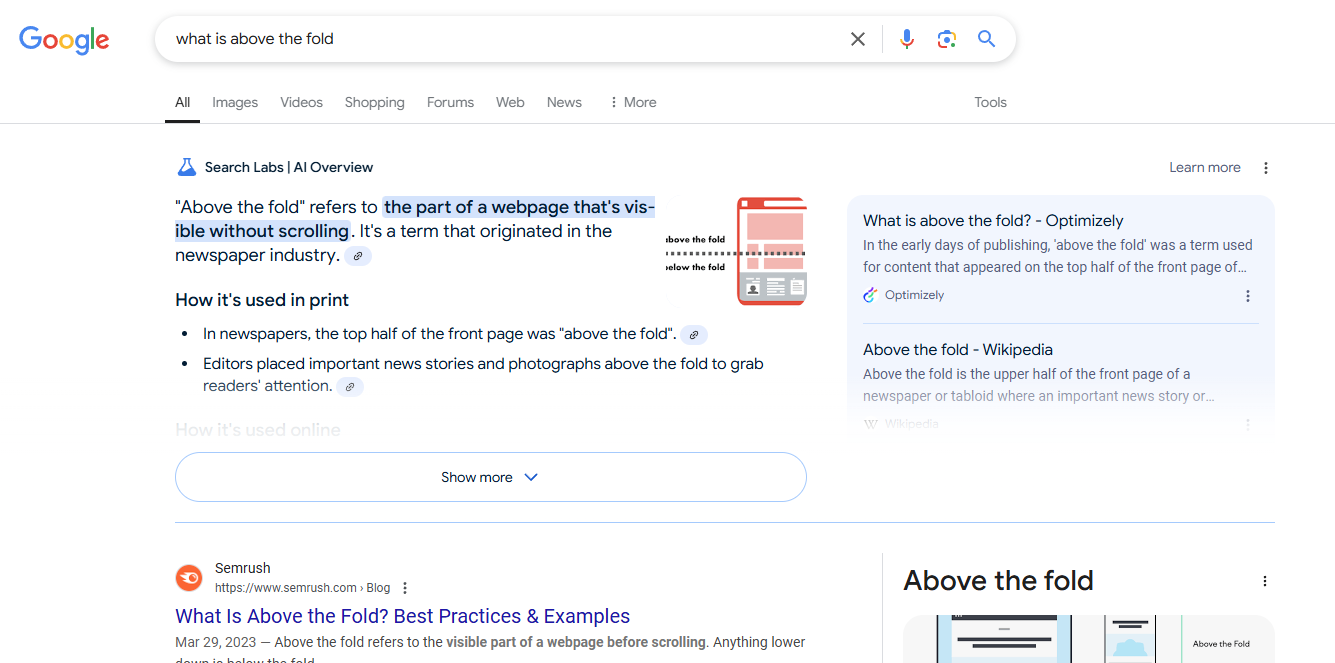
The AI Overview pulls information from the web and presents it to the user in one post. The conversion optimization company that was driving traffic to their blog post around the topic “what is above the fold” is now getting less traffic since the answer is given without going to their site.
The AI overview has already resulted in a sharp decrease in organic traffic for many websites. The popularity of other LLMs such as Perplexity AI and ChatGPT also take data from the web, meaning fewer people are traditionally browsing to find what they need. So less opportunity for anyone to stumble upon your site organically. Site traffic is only expected to drop even further.
Unfortunately, there is no winning against the LLMs. The only solution to this is to create well-structured content on your site in hopes it gets ingested into a search engine’s LLM.
So, we can only help the visitors that make it to our sites. However, we have to help them quickly and provide a better experience than a search engine.
I foresee the future of websites as not a maze of pages all put together via a content directory but a simple AI interface built for the purpose of user engagement and problem-solving. Essentially, imagine a minimalistic website primarily powered by AI. Gone is the need to navigate through hundreds of products, category pages, and needless visual clutter that steer users away. Instead, users will be prompted to interact with your site and then shown exactly what they need, If additional information is needed, they can then click to visit an internal page.
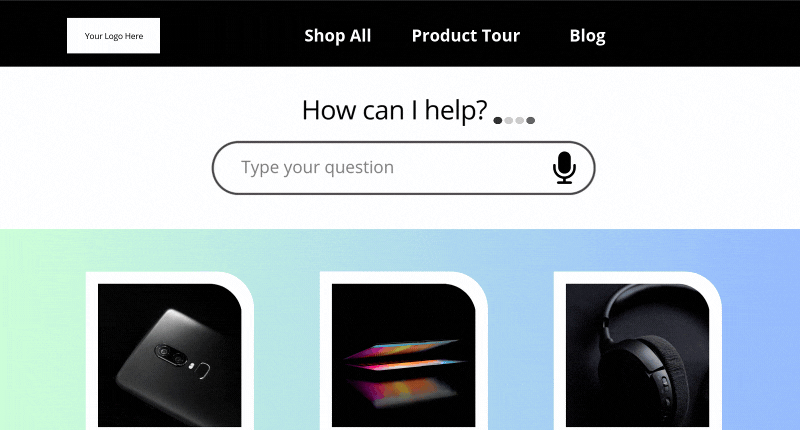
This is a speculative design of an Intelligent Website. Note the minimalist header and the larger focus on conversational search.
The measurement of success on the site will change. Stickiness may drop, but that’s only because visitors will find exactly what they need; lead forms will have higher quality submissions and products will be found faster with fewer pages viewed and more up-sales before purchase.
Visitors are directly connected to content, products, or services. Instead of a branching network of pages, there is a single path to the page desired.
Intelligent Websites have the following properties:
-
-
- Actively engages visitors in conversation directly from the home or landing page.
- Visitors no longer have to rely on the navigation of the site.
- Sites will still have pages for SEO, AIO, and LLM placement.
- Page engagement increases and page views will decrease.
- Pages viewed will have higher quality visitors and a higher conversion rate.
-
Below is an example of the traditional website architecture:
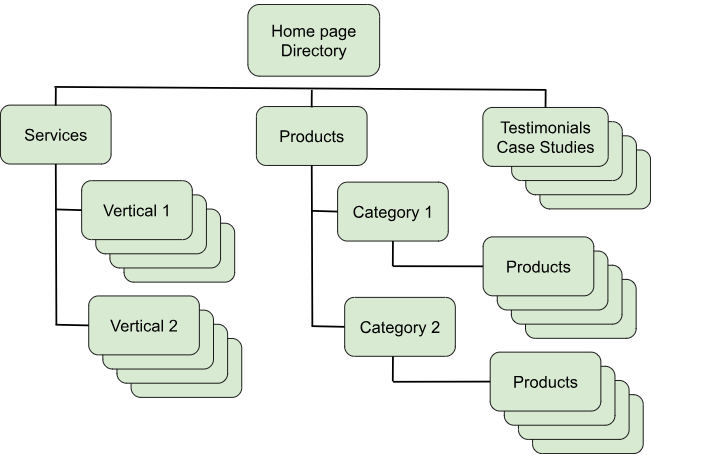
This layout will gradually become obsolete. It will be replaced by the Intelligent Website architecture:
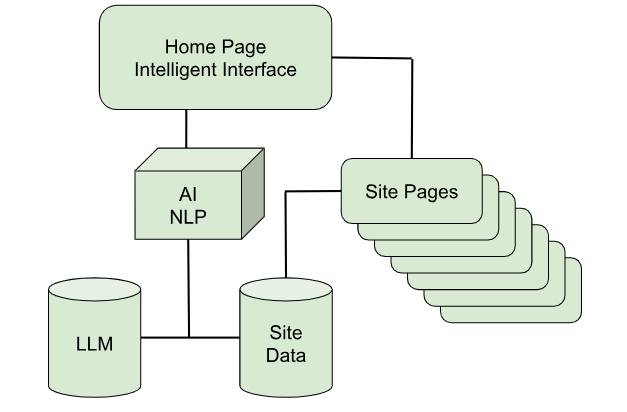
Conclusion
Intelligent websites have arrived and will improve user experience and the company’s brand and bottom line. Intelligent websites have AI embedded into the site, unlike traditional sites where the users have to use a navigation bar to find information.
For website visitors – They will learn about a company, ask for information about products and services, submit leads, purchase products, and access efficient support all from one page.
For companies – They will experience lower bounce rates, and overcome sales obstacles which will result in increasing sales and leads for services. Customer support will improve and the support staff will be able to spend meaningful time with those who need human support.
It is possible that sometime in the future search engines and the new AI engines will not ingest website pages but will have direct access to a website’s vectorized data as a feed with attribution to specific pages the company wants in search engines.
We are building technology to support Intelligent Websites. Click below to get early access.
- The Rise of Intelligent Websites - February 19, 2025
- Top Trending Products to Boost Your Shopify Store in 2024 - September 4, 2024
- AI Terms Glossary: Key AI Concepts You Should Know - August 22, 2024
